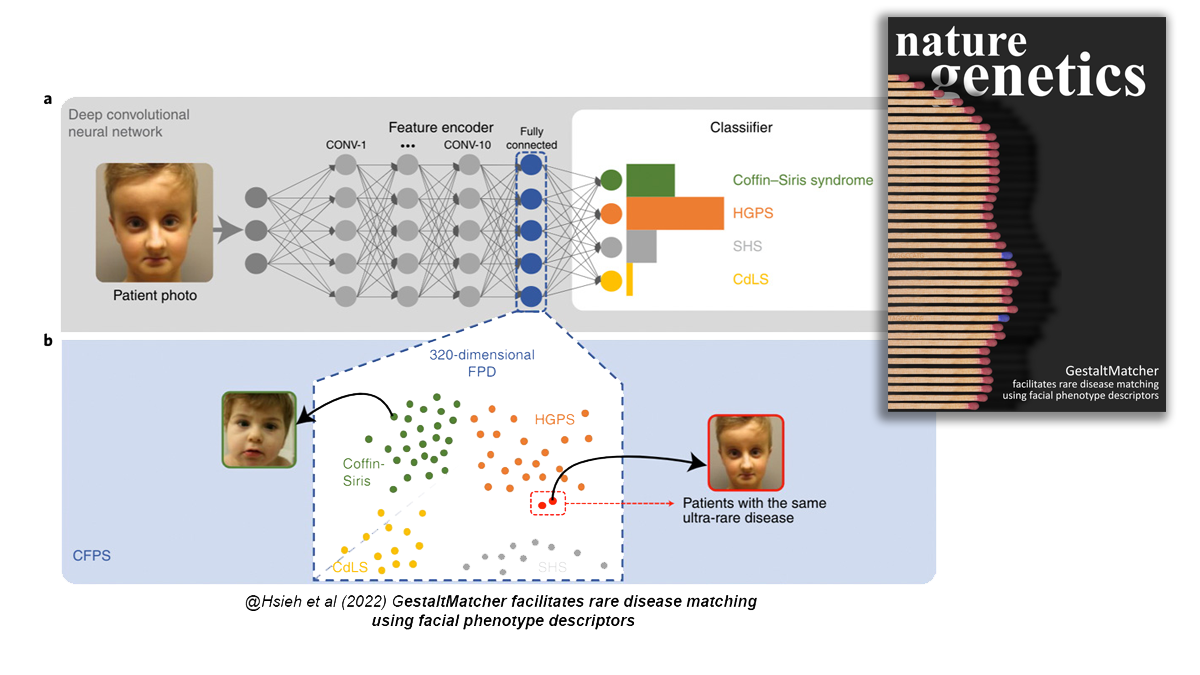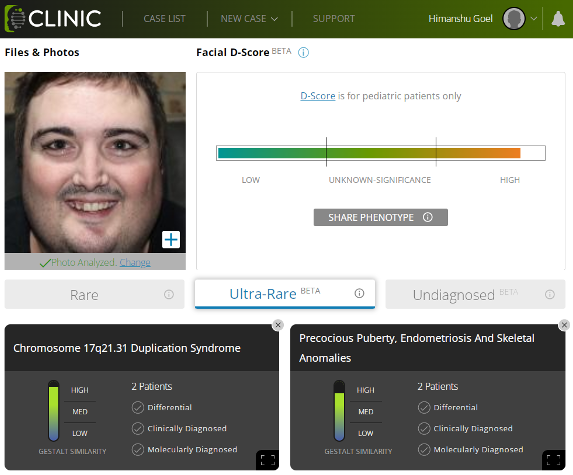What is GestaltMatcher?
GestaltMatcher is a deep learning technology that matches rare disease patients’ photos with other patients’ photos around the world instantaneously, thus, potentially helping to accelerate the clinical diagnosis by medical professionals of patients with ultra-rare disorders as well as enable the definition of new syndromes. The proprietary technology strengthens next-generation phenotyping (NGP) — the capture, structuring, and analysis of complex human physiological data — by allowing medical professionals to identify hundreds of additional disorders just with facial analysis.
How does Face2Gene GestaltMatcher algorithm works with ultra-rare cases?
FDNA’s breakthrough study findings were published in the esteemed peer-reviewed journal Nature Genetics, in a paper titled “GestaltMatcher facilitates rare disease matching using facial phenotype descriptors.” In collaboration with a team of influential scientists and researchers, the study on the use of facial analysis as a tool to help detect rare genetic disorders found that FDNA’s technology could accelerate the clinical diagnosis by medical professionals of patients with ultra-rare disorders and facial dysmorphism, as well as enable the definition of new syndromes.
As an example, the picture bellow shows a patient’s ultra-rare disease caused by mutations in LEMD2 that was matched with another patient with the same ultra-rare disorder, leading to the diagnosis.
(source: Nature Genetics).
Key findings from the study include:
- GestaltMatcher is an AI technology that is used to identify the facial representations of more than 1,000 rare genetic diseases and distills facial features into a multi -dimensional space, which helps medical professionals to accelerate the matching and diagnosing of ultra-rare disorders.
- Adds significant value to phenotypic evaluations in clinical genetics, research and genetic testing (NGS).
- GestaltMatcher achieves a comparable top-10-accuracy on all previously supported disorders and matches one third of cases with an ultra-rare or novel disorder. The study was conducted on 17,560 portrait photos from patients with 1,115 rare disorders.
Diagnosing a Patient with the Help of
Face2Gene GestaltMatcher
Dr. Himanshu Goel, a clinical geneticist in Newcastle, Australia, used the help of Face2Gene photo-based GestaltMatcher technology to diagnose a 26-year-old patient with the Chromosome 17q21.31 Duplication Syndrome – the first ultra-rare syndrome case diagnosed with FDNA’s proprietary AI Technology. FDNA’s innovative photo-based AI was able to support Dr. Goel in making the diagnosis in quick time, although very few photos of diagnosed reference patients are available.

Using GestaltMatcher in your research
Carolina Alves, FDNA Senior Ai Researcher, talks about how can you use GestaltMatcher technology in your research, presented as part of the webinar “A Novel Syndrome Associated With Prenatal Fentanyl Exposure” conducted on Dec 4, 2023.
























































